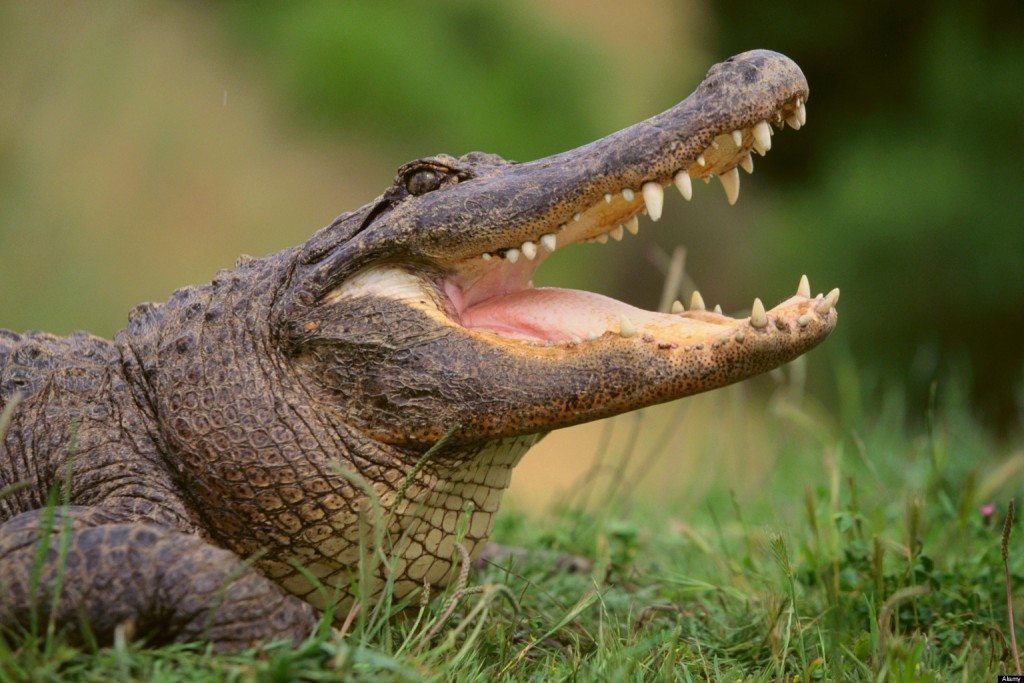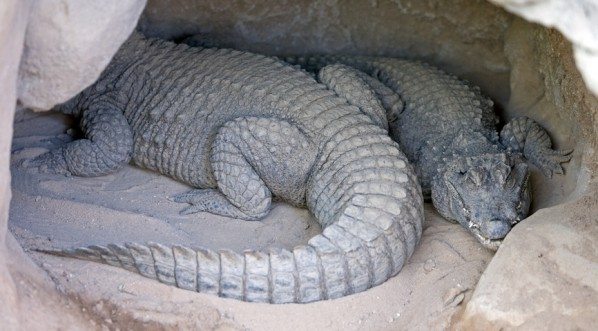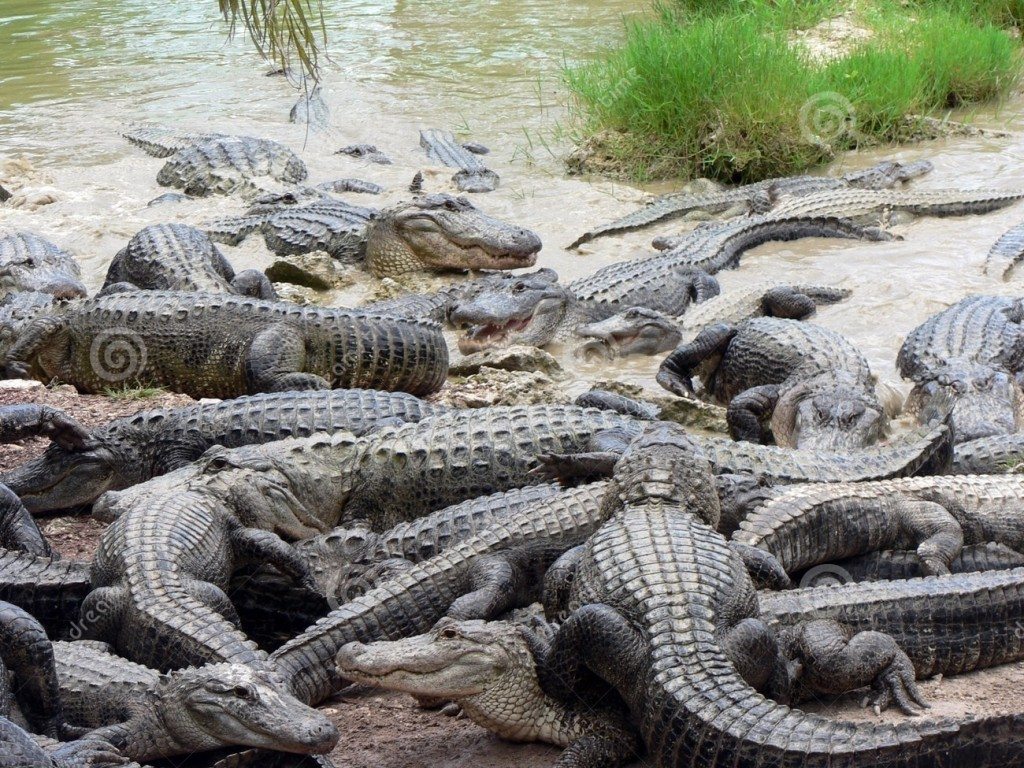Alligator is everybody’s worst nightmare when it comes to being bitten. The land/sea monster can rip off an arm or a leg with ease in a single bite and once their jaws clamp shut they are almost impossible to prise open again until the alligator himself decides he wants to. Alligators are one of the most fascinating animals to have made it into this age; a powerful carnivorous reptile with 4 legs and a massive tail that is as long as its body. To learn more about this reptile, here are 20 interesting Alligator facts we have gathered for you.
General Alligator Facts
1 – ‘Alligator’ or ‘El Legarto’, which is Spanish for, quite simply, ‘the lizard’, as named by the first explorers and early settlers in Florida.
2 – There are two living species of alligator – the American Alligator, Alligator Mississippiensis, and the Chinese Alligator, A. Sinensis – and their lifespan is not yet known since the oldest in captivity was born in 1936 and is so far still alive.
3 – The American Alligator is much the larger of the two, being around 13 ft (4m) long and 360 kg (790 lb) in weight, while the Chinese Alligator is only around 2.1 m (7 ft) long. The largest alligator on record was in Louisiana and measured 19.2 ft (5.84 m).
4 – Alligators first appeared some 37 million years ago, during the Oligocene era, making them officially ‘living dinosaurs’.
5 – American alligators are native to the southeastern USA, with the largest populations being found in Louisiana and Florida – there are more than two million alligators more or less evenly distributed between just those two states.
6 – The Chinese alligator is extremely endangered, with many living in captivity. They are now found only in a few dozens in their original home- the Yangtze River Valley.
Alligator Fun Facts – Characteristics
7 – Alligators do not breathe in the same way as most animals. Most of us use what is called ‘tidal breathing’, where the air is drawn in through branched bronchi to dead-end alveoli in the lungs, then blown out the same way it came in, but alligators’ breathing, like birds, is ‘unidirectional’. This means that the air in their lungs is drawn into one section, the outer branch, moves around in a circuit through the parabronchi without changing direction and exits through the opposite section, the inner branch.
8 – In order to start a death roll, the alligator must be able to flex its flat, muscular rudder of a tail – if it can’t move its tail it can’t start a death roll, which is one of the reasons that people capturing an alligator make sure to sit on or otherwise immobilise its tail as well as its jaws!
Read Here: 20 Facts About Armadillo
9 – A quirk of the alligator’s jaws is that although they have immensely powerful muscles to hold them shut, the muscles used to open the jaws are relatively weak – even a human can hold the jaws of an alligator shut bare-handed, although when securing them as such a few turns of duct tape is a more sensible option!
10 – Occasionally there will be born a white alligator, which is due to either albinoism (due to a total lack of melanin, all white with pink eyes and skin) or a leucism (due to a genetic condition, the skin is very pale but eyes are normal colour and sometimes there are patches of colour on the skin, too). However, these animals are so badly adapted to survive in the wild that, basically, they don’t, so it’s pretty certain that the only time you will ever see one is in captivity.
Alligators vs Crocodiles
11 – Alligators and crocodiles are often mixed up, but they are in fact completely separate species and there are several ways of telling them apart, mainly around the head. For instance, alligators have wide, u-shaped snouts, where crocodiles have narrow V-shaped ones. An alligator’s upper jaw is slightly wider than its lower, with the lower teeth fitting in depressions in the upper jaw and therefore not visible when the mouth is closed. A crocodile’s upper and lower jaws, however, are the same width and the teeth of the lower jaw lie outside the upper; in particular, the fourth tooth, which is larger than the others, fits in a ‘dent’ in the upper jaw. Alligators are also darker in colour, have less webbing on their feet, no ‘fringe’ on their hind legs and are less aggressive.
Alligator Facts – Habitat
12 – Alligators prefer to live in fresh water, but they can tolerate salt water if they have to. They construct ‘gator holes’ in wetlands and in so doing increase plant diversity and help provide homes for other animals during dry times, hence they are considered good for conservation and the environment, despite the danger they present to humans!
13 – The largest alligators of both sexes will claim and defend prime territories in solitary splendour, but smaller animals will congregate in large groups and tolerate each other there.
Behavioral Facts About Alligators
14 – Alligators are capable of short bursts of speed despite their otherwise slow, heavy bodies, and usually use this to lunge at prey on the banks of their watery home, grabbing them and dragging them back into the water to be eaten. Smaller animals are killed and eaten with one bite, but larger prey is either left to rot in order to break it up more easily, or torn apart by grabbing a ‘part’ and spinning in a ‘death roll’ to detach it. That’s one of the most amazing Alligator facts unknwon?
15 – Despite their reputation, alligators (unlike crocodiles) are naturally not aggressive to humans and will move away if approached, but if the humans feed them this natural reluctance will fade as they learn to associate people with food – at which point, of course, they’ll become far more dangerous. It is, therefore, illegal to feed alligators at all in Florida.
16 – Alligators are surprisingly good mothers, protecting the eggs from predators, helping the newborn young to reach the water and protecting the youngsters for their first year or so as long as they stay nearby. However, the main cause of baby alligator deaths is that they are killed by other adult alligators, and this can reduce their numbers by up to half.
17 – Alligators eat different foods, depending on how big they are. Small, young reptiles eat insects, crustaceans, snails, fish, even worms, but as they grow they progress to bigger prey such as deer, other reptiles, turtles, various mammals and even carrion on occasion. The biggest animals go for the biggest prey, even ambushing dogs, black bears and panthers, and making them the ‘apex predator’ wherever they live.
Alligator Facts – Family
18 – Alligators become sexually mature at about six feet (1.8 m) long and the adults form ‘bellowing choruses’ in late spring, repeating the bellowing for a few minutes at a time, several times a day, usually within a few hours of sunrise, and on those nights they gather for group courtship in ‘alligator dances’.
19 – Alligator eggs are gender-neutral when laid in the mother’s vegetation nest, the sex of the new hatchlings is determined by the temperature while they are incubating – above 30ºC (86ºF) will produce males, while below that will yield females. The babies are hatched with “an egg tooth” on their noses that help them break out of the shells.
Alligators: Our Native Assistants!
20 – American alligators actually provide a valuable service to man, since Floridian authorities spend enormous amounts on bounty fees for controlling the introduced pest nutria (called coypu in Europe) – the alligators do it for free. Just don’t let the alligator get the idea you taste as good as they do…!
That’s all the interesting Alligator facts we have got. You can also read the 20 Interesting Facts About Lions.


